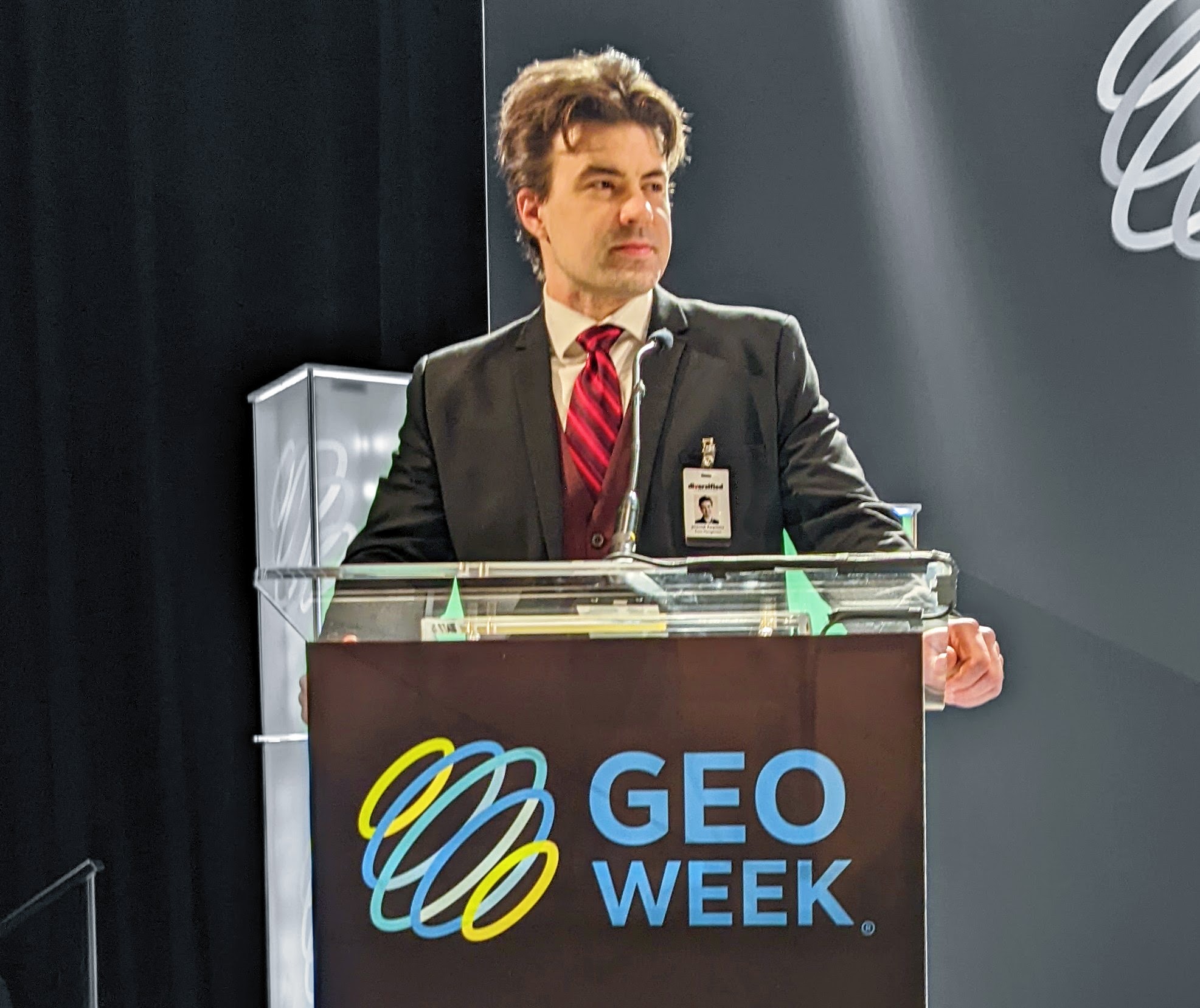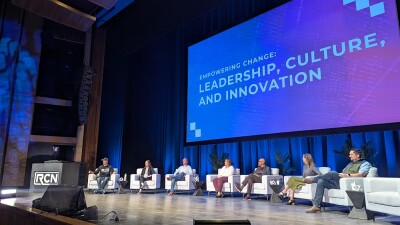Increasing efficiencies and changing expectations across the construction industry has been a major point of discussion for years now, but innovations related to digital twins, AI and more have upended these conversations. Can AI help optimize design and planning? How will these innovations define sustainability initiatives? What role will drones, robotics, and IoT play in these changes?
A panel of experts took the stage at Geo Week 2024 to explore the transformative forces shaping the industry while also outlining a vision for future construction technologies, processes and workflows. Moderated by Carlos Femmer from HDR Engineering, Inc., the session outlined the developments and innovations that are defining the present and future of the entire industry.
Steve Jones from Dodge Construction Network has previously spoken about innovations that will change the space, but the integrated and connected environment is one that he simply refers to as “digital,” which allows individuals and entire organizations to function in an integrated and connected fashion.
“We are on a digital journey,” said Jones. “That started with automation and getting away from doing things on paper, but rapid advancements have enabled the creation of digital project teams that can all access and utilize assets that were formerly very siloed project teams.”
He also called out how the different player in this conversation is the owner, who previously deferred to the architects and contractors. Once they saw they could manage their entire portfolio on a single channel, owners began driving digital practices and requirements. It’s a big step toward seeing all assets and processes become fully virtual and industrialized.
Stefan Hrabar from Emesent has been at the forefront of drone autonomy for nearly 20 years. Hraber provided some predictions for the future of autonomy in construction based on parallels in the mining section, which have similar asset management lifecycles. Emesent has been deploying systems in underground mines for over five years, providing them with and incredible perspective around how the changes there could impact the construction industry.
“These environments are very complex and change day to day,” Hrabar said. “That’s why you need to be constantly capturing data, but the similarities don’t end there.”
Hrabar outlined some predictions that detailed how autonomous systems will play an increasing role in data capture and increasing automation of workflows in construction based on how those processes have played out in the mining industry, but also cautioned the adoption process could be slower.
Ramesh Sridharan is currently a product manager for infrastructure products at Autodesk, and he detailed how things have changed with the construction lifecycle by explaining the way that work has changed, which has in turn also brought unprecedented demand. Those changes are everything from paperless to procurement to wearables to extended reality.
“Automation will be a key driver of productivity,” said Sridharan. “Whether it’s onsite automation or offsite production or construction management, automation will support efforts relating to winning work and executing work to get repeat customers.”
Nate McGee from Bentley Systems mentioned how monitoring in construction was always less of a priority than in mining, but changing that paradigm is built into the future of construction that I dependent on continuous connections and updates.
“IoT plays a huge role in digital twins,” said McGee. “As soon as you pack up, that data is out of data. That’s why everything has to be ongoing.”
He shared the details of the Union Station Rail Corridor in Toronto that demonstrated the connections between different systems, data sets and organizations. He also outlined how the work they did on a different project where the estimated project savings of the optimized shoring design and automated monitoring program estimated at over $1m in monitoring and design fees.
He ended with some parting thoughts that summed up where things are going in terms of the power of AI, the role humans will play in construction, and what happens with certain trendy buzzwords.






